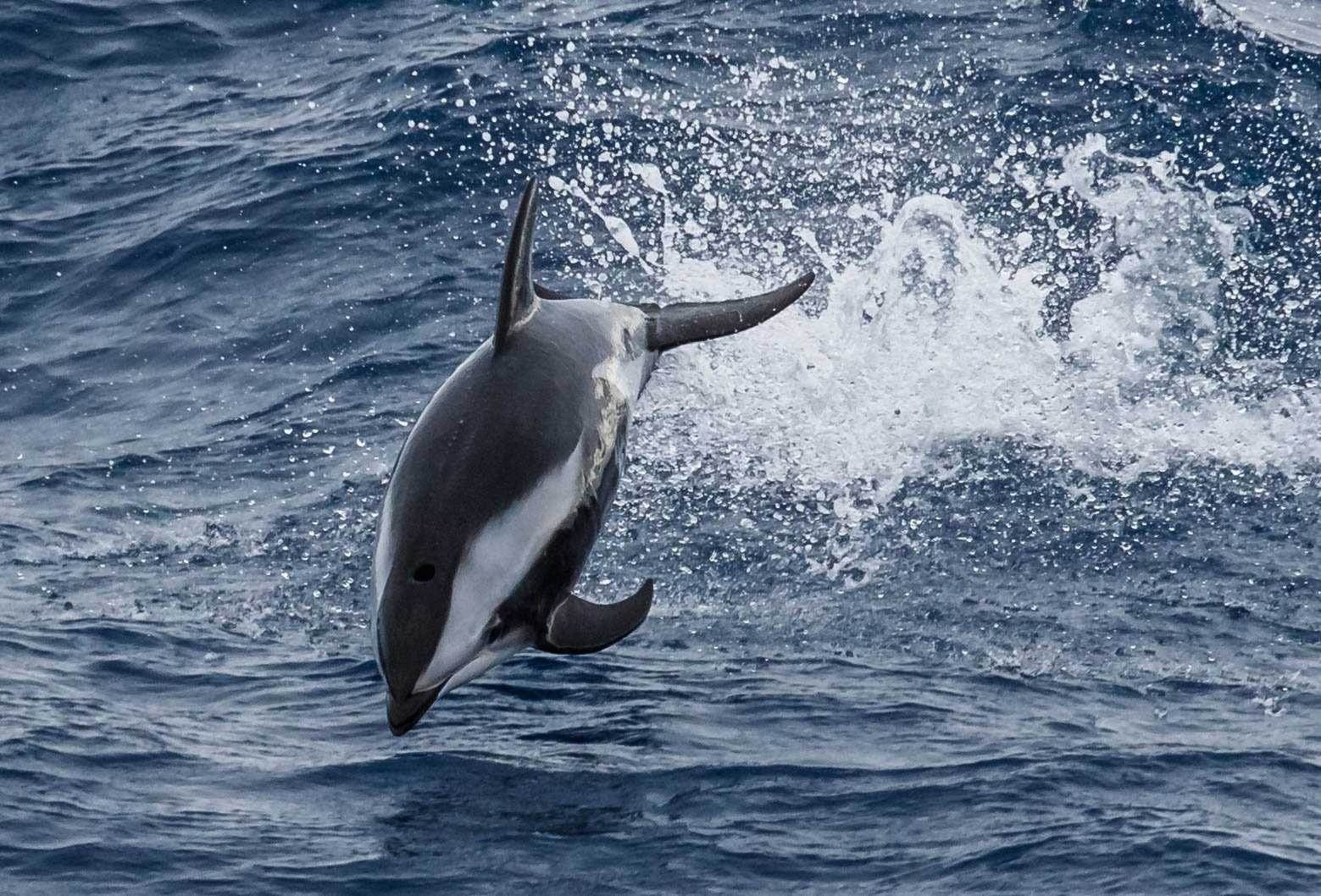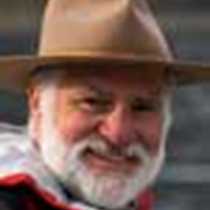After departing from Ushuaia we headed east along the Beagle Channel. This channel, which joins the Atlantic and Pacific Oceans and was certainly known to the Yaghan people, was first chartered by Commander Philip Parker King and Captains Pringle Stokes and Robert FitzRoy whilst serving on board HMS Beagle during the period of 1826 to 1830.
After our first dinner and the parka exchange party we heard an announcement that sei whales had been spotted so we headed for the bridge or the open decks to catch sight of these giant cetaceans. Our captain expertly approached them and we were able to enjoy good views of these magnificent mammals. To put some icing on the already delicious cake, two species of dolphin—black-faced and dusky—approached the ship and rode our bow for a while. A few hours later and we were out into open seas, the ship gently moving with the swells coming from the northwest sector of the Drake Passage.
Quite a good number of people were up early on the bridge and over the next few hours we were able to enjoy many of the seabirds that frequent these waters, including the two largest flying birds on the planet, the royal and wandering albatrosses. However, the light winds were not the most conducive for these birds which have made the oceans their home.
Shortly after a hearty breakfast we were introduced to the expedition team, the National Geographic photographer, and our Global Perspectives Guest Speaker, followed by a presentation on photography. Afterwards there were various breakout sessions to help us delve more deeply into our photo equipment and learn how best to capture the images we will see on our voyage.
During the afternoon we had the opportunity to attend two further presentations: one on the biology and ecology of seabirds. This was followed after tea by our guest speaker who addressed us on the complexities and beauty of ice; his talk was entitled “Finding Ice”.
Throughout the day we had fleeting sightings of more seabirds as well as hourglass dolphins, surely one of the most beautiful to be found anywhere.
Towards the end of the day we crossed two important boundaries: the first was the polar front, also known as the Antarctic Convergence. This is a boundary between the warmer waters from the Indian, Pacific and Atlantic Oceans and the colder waters from the Southern Ocean. The temperature differences mean that the waters do not mix readily, and so a huge boundary is demarcated all the way around the Antarctic Continent. Once the convergence was crossed we were, from a biological perspective, in Antarctica. The second milestone is 60º South Latitude, the political boundary of the Antarctic, and from this point south everything is governed by the Antarctic Treaty, signed by 12 signatory nations and ratified by their respective parliaments and congresses in 1961.
It was a good first day and the weather was very kind to us.









